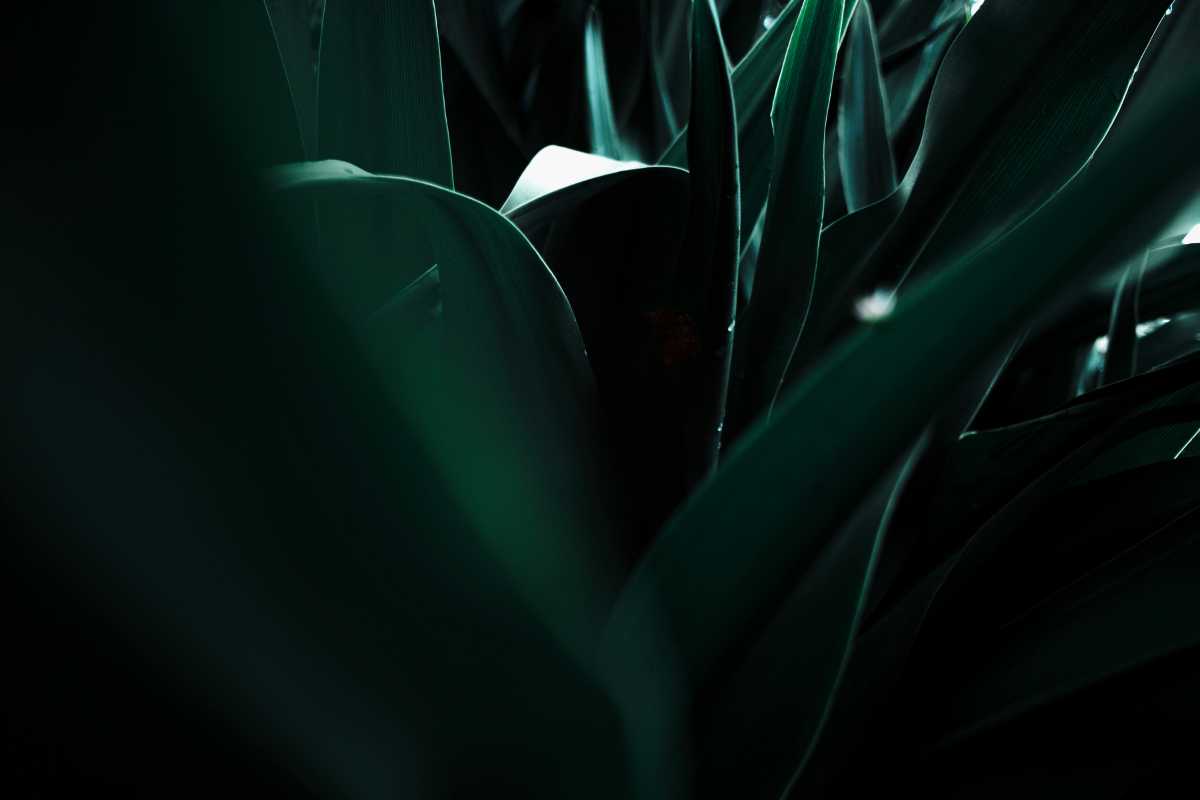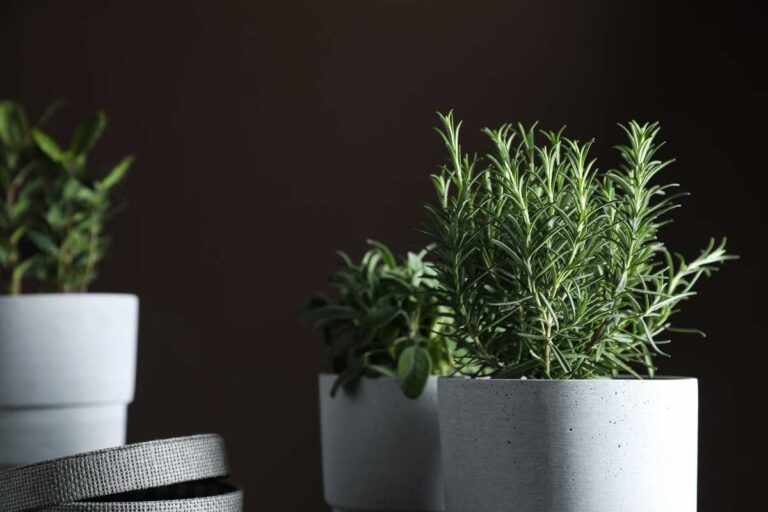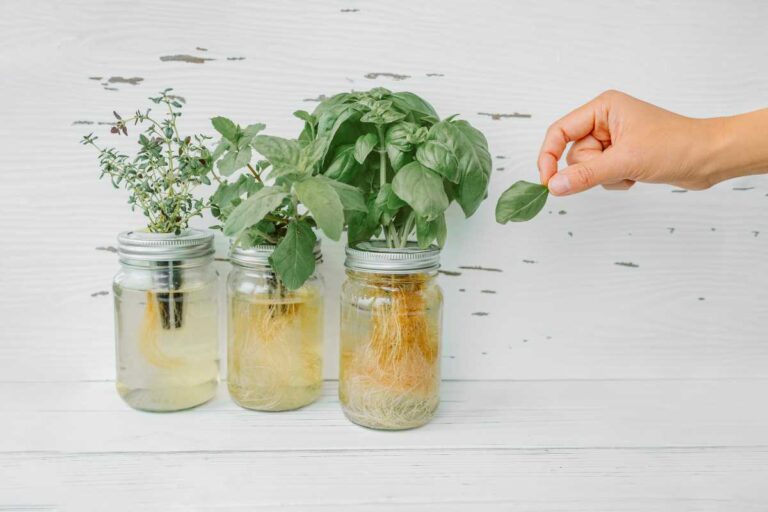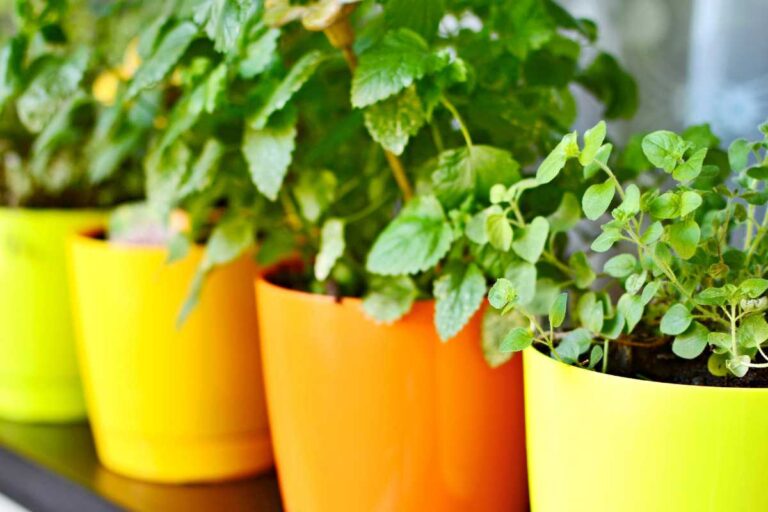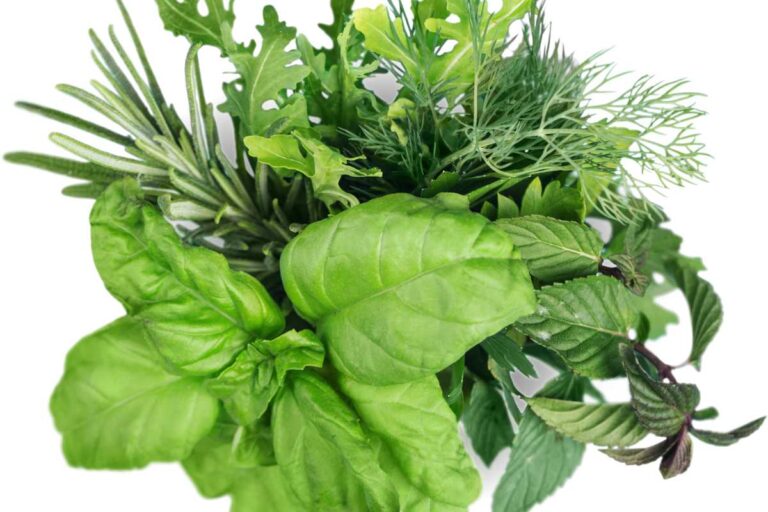What Herbs Can Grow Without Sunlight – Discover 8 No-Sun Options for Your Garden
What Herbs Can Grow Without Sunlight – Discover 8 No-Sun Options for Your Garden
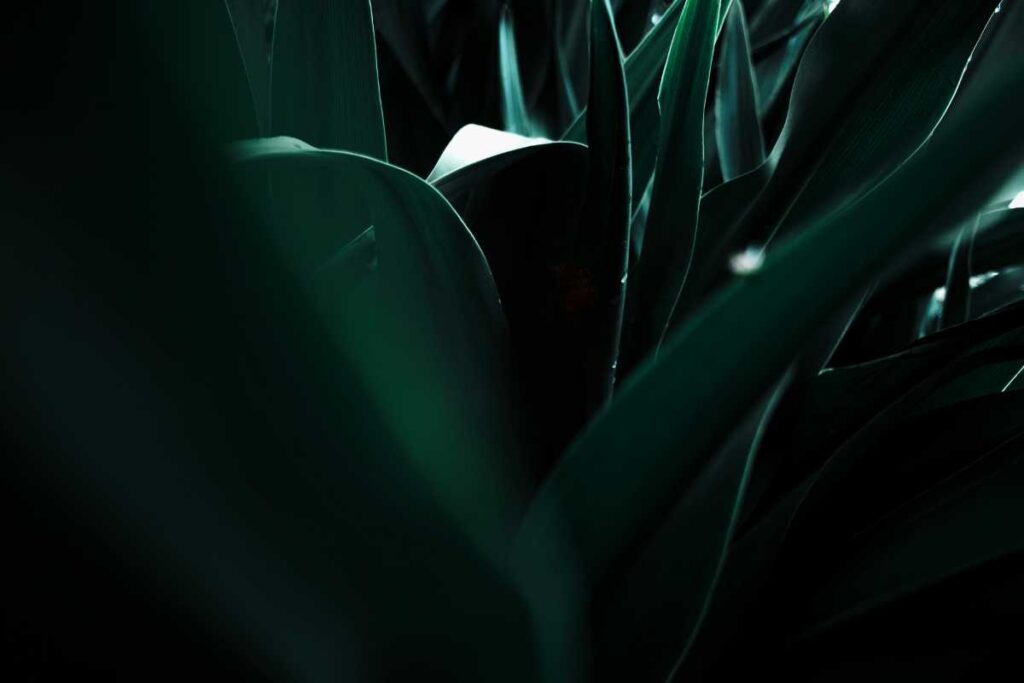
Are you searching for a way to bring greenery into your space but lacking direct sunlight?
Growing herbs in shady areas may seem challenging, but with the right knowledge and techniques, you can still enjoy a flourishing herb garden. Whether you have limited outdoor space or want to grow herbs indoors, there are plenty of options available.
By understanding the unique characteristics of shade-loving herbs, you can select the perfect varieties that thrive in low-light conditions. From aromatic basil to flavorful mint and versatile parsley, there is an array of herbs that can add freshness and flavor to your culinary creations.
Join us as we delve into the possibilities of growing herbs without direct sunlight. Discover practical tips, creative solutions, and expert advice on cultivating a thriving herb garden in any environment. Let’s unlock the potential of shade-loving herbs together!
Tired of struggling with outdoor herb gardens in unpredictable weather? Discover the secret to successful herbal gardening indoors and enjoy fresh herbs year-round. Check out our article now!
Shade-Loving Herbs: Explore 8 Delicious Choices
Delve into a variety of flavorful herbs that flourish in shady areas.
Sunlight is often considered a crucial requirement. However, there are several shade-loving herbs that can thrive in low light conditions, allowing you to enjoy the benefits of fresh herbs even in your shaded garden. Let’s explore ten delicious choices that will add both flavor and variety to your culinary endeavors.
Get introduced to ten different herbs that can be grown in low light conditions.
- Ginger: Known for its distinct and spicy flavor, ginger is a versatile herb that can tolerate partial shade. Its rhizomes can be used fresh or dried in various dishes, providing a zingy taste and numerous health benefits.
- Mint: With its refreshing aroma and cooling properties, mint is a popular choice for both culinary and medicinal purposes. This shade-loving herb adds a burst of freshness to beverages, salads, desserts, and savory dishes alike.
- Chives: These slender green stalks pack a punch of onion-like flavor without the intensity. Chives thrive in partially shaded areas and are excellent additions to soups, omelets, dips, and garnishes.
- Parsley: A staple in many kitchens worldwide, parsley is an easy-to-grow herb that tolerates shade well. Its vibrant green leaves add freshness and depth of flavor to sauces, marinades, salads, and more.
- Lemon Balm: This lemon-scented herb not only thrives in shady spots but also attracts beneficial pollinators like bees and butterflies. Use its leaves for herbal teas or infuse them into desserts for a delightful citrus twist.
- Cilantro: Also known as coriander leaves or Chinese parsley, cilantro offers a unique taste loved by many despite being polarizing for some palates. It grows well in partial shade and enhances the flavors of Mexican, Indian, and Southeast Asian cuisines.
- Oregano: While oregano typically prefers full sun, it can tolerate some shade as well. This herb is a must-have for Italian and Mediterranean dishes, adding a robust and earthy flavor to sauces, pizzas, and grilled vegetables.
- Thyme: With its aromatic leaves and delicate flowers, thyme is an herb that adapts well to shady environments. Its versatile nature makes it suitable for seasoning meats, stews, roasted vegetables, and even bread.
Growing Herbs Indoors: Simple Tips for Sunlight-Free Success
Discover practical tips for successfully growing herbs indoors without sunlight.
Growing herbs indoors can be a rewarding experience, even if you don’t have access to direct sunlight. With the right techniques and alternative lighting options, you can create an ideal environment for your sun-deprived herb plants. Here are some tips to help you achieve sunlight-free success in your indoor herb garden:
- Choose the right seeds: When starting your indoor herb garden, select seeds that are suitable for growing indoors. Some herbs thrive better in low-light conditions compared to others. Examples of herbs that can grow well without direct sunlight include mint, parsley, chives, and cilantro.
- Utilize grow lights: Since natural sunlight is limited indoors, using artificial lighting is essential for the healthy growth of your herbs. Grow lights provide the necessary spectrum of light required by plants to carry out photosynthesis effectively. LED grow lights are energy-efficient and emit wavelengths suitable for plant growth.
- Positioning and duration: Proper placement and timing of your grow lights are crucial factors in ensuring optimal growth for your indoor herbs. Position the lights approximately 6-12 inches above the plants to mimic natural sunlight intensity. Most herbs require around 14-16 hours of light per day, so set up a timer to ensure they receive adequate illumination.
- Consider supplemental lighting: If you’re unable to provide sufficient light solely through grow lights, consider supplementing with natural light from windows or skylights during daylight hours. Place your herb pots near these sources whenever possible to give them a boost of additional brightness.
- Create a favorable environment: Besides lighting, maintaining appropriate temperature and humidity levels is vital for indoor herb success without sunlight. Most common culinary herbs prefer temperatures between 60-70°F (15-21°C). Ensure good air circulation by using fans or opening windows periodically. Misting your herbs with water can help maintain humidity levels.
Learn about alternative lighting options to provide adequate light for indoor herb gardens.
If you’re unable to access grow lights or prefer alternative methods, there are other lighting options available to support the growth of your indoor herbs. Here are a few alternatives worth considering:
- Fluorescent lights: Fluorescent tubes, particularly T5 and T8 bulbs, can be used as an affordable substitute for dedicated grow lights. They emit a wide spectrum of light suitable for plant growth and are readily available in most hardware stores.
- Compact fluorescent lamps (CFL): CFL bulbs are energy-efficient and emit less heat compared to traditional incandescent bulbs.
- LED lights: LED grow lights are highly energy-efficient and have a long lifespan. They produce little heat and can be adjusted to emit specific wavelengths of light for optimal plant growth.
- High-intensity discharge (HID) lights: HID lights, such as metal halide (MH) and high-pressure sodium (HPS) bulbs, are commonly used in commercial indoor gardening setups. They provide intense light output and are suitable for larger herb gardens.
- Full-spectrum lights: Full-spectrum lights mimic natural sunlight and provide a balanced spectrum of light for plants. They can be beneficial for herb gardens that require a wide range of light wavelengths.
- Induction lights: Induction lighting is a long-lasting and energy-efficient option for indoor herb gardens. They have a high color rendering index (CRI) and provide a broad spectrum of light.
- Halogen lights: Halogen bulbs emit a bright, white light that is suitable for herb gardens. However, they can produce a significant amount of heat and may require additional cooling measures.
Parsley: Thriving in Partial Shade Gardens
Parsley is a versatile herb that holds the secret to flourishing even in gardens with limited sunlight exposure. With its ability to adapt and thrive in partial shade, parsley offers an excellent option for those seeking to add greenery and flavor to their outdoor spaces.
Cultivating Healthy Parsley Plants
Starting with healthy seedlings is crucial. Begin by selecting high-quality parsley seeds or seedlings from a reputable source. Once you have your seedlings ready, choose a suitable spot that receives at least four hours of indirect sunlight per day.
Prepare the soil by incorporating organic matter such as compost or well-rotted manure. This will enhance the soil’s fertility and drainage capabilities. Plant the seedlings approximately six inches apart, ensuring they have enough space to grow without overcrowding each other.
To maintain optimal growth, water your parsley regularly but avoid overwatering as it can lead to root rot. Mulching around the plants can help retain moisture and suppress weed growth. Applying a balanced organic fertilizer every four weeks will provide essential nutrients for robust plant development.
Culinary Uses and Health Benefits
Parsley’s culinary versatility knows no bounds. Its fresh and vibrant flavor makes it an ideal addition to various dishes ranging from salads and soups to sauces and marinades. Not only does it enhance taste profiles, but parsley also offers numerous health benefits.
Rich in vitamins A, C, K, and folate, parsley contributes to overall immune system support while promoting healthy blood clotting and bone strength. It also contains antioxidants that aid in reducing inflammation within the body.
Harvesting and Storing Parsley Leaves
When your parsley plants reach maturity—typically after three months—you can start harvesting the leaves. Begin by snipping outer stems from the base to encourage continuous growth. Avoid removing more than one-third of the plant at a time, allowing it to replenish itself.
To store parsley leaves for long-lasting freshness, follow these steps:
- Rinse the leaves thoroughly under cold water to remove any dirt or debris.
- Pat them dry gently using a paper towel or kitchen cloth.
- Bundle the leaves together and tie them with a rubber band or string.
- Hang the bundle upside down in a cool, well-ventilated area away from direct sunlight.
- Once dried, crumble the leaves and store them in an airtight container.
Tarragon: A Must-Have Herb for Shaded Spaces
Tarragon, with its unique flavor profile and aromatic qualities, is the perfect herb for those looking to add some zest to their shaded spaces. While many herbs thrive in direct sunlight, tarragon stands out as a versatile option that can flourish even in areas with minimal light.
Growing Tarragon Successfully in Environments with Minimal Sunlight
Growing tarragon in shaded spaces requires some careful consideration. Unlike other sun-loving herbs like oregano, tarragon prefers cooler temperatures and partial shade. When selecting a spot for your tarragon plant, look for areas that receive only a few hours of direct sunlight each day or are mostly covered by shadows.
It’s important to note that while tarragon can tolerate less light than other herbs, it still needs some exposure to the sun to thrive.
To get started with growing tarragon in shaded spaces:
- Choose a suitable pot: Opt for a well-draining pot that allows excess water to escape easily.
- Prepare the soil: Use a nutrient-rich potting mix with good drainage capabilities.
- Planting: Place the tarragon root ball gently into the pot and cover it with soil.
- Watering: Keep the soil consistently moist but avoid overwatering as it can lead to root rot.
- Fertilizing: Apply a balanced liquid fertilizer every two weeks during the growing season.
By following these steps and providing adequate care, you’ll be able to cultivate healthy tarragon plants even in areas where sunlight is limited.
Creative Ways to Incorporate Tarragon into Your Culinary Creations
Tarragon’s distinctive flavor adds depth and complexity to various dishes, making it an excellent addition to your culinary repertoire. Here are some creative ways to incorporate tarragon into your cooking:
- Infuse it in vinegar or oil: Add a sprig of fresh tarragon to a bottle of vinegar or olive oil for a subtle, herbaceous flavor.
- Make tarragon tea: Steep a few tarragon leaves in hot water for a soothing and aromatic herbal tea.
- Enhance sauces and dressings: Chop up some tarragon leaves and mix them into mayonnaise, vinaigrettes, or creamy sauces for an extra burst of flavor.
- Pair it with proteins: Tarragon complements the flavors of chicken, fish, and eggs beautifully. Use it as a seasoning or garnish for these dishes.
Cilantro: Versatile Uses in Shady Areas
Cilantro, also known as coriander, is a shade-tolerant herb that adds a distinctive and refreshing taste to various dishes. If you have limited sunlight in your gardening space, don’t worry! You can still enjoy the benefits of growing cilantro.
Growing and Caring for Cilantro in Limited Sunlight
Growing cilantro in shady areas requires some special attention to ensure its optimal growth. Here are some tips to help you successfully cultivate this versatile herb:
- Choose the Right Location: Find a spot that receives partial sunlight or dappled shade throughout the day. Avoid areas with full shade as it may hinder cilantro’s growth.
- Prepare the Soil: Ensure that the soil is well-draining and rich in organic matter. Add compost or well-rotted manure before planting to provide essential nutrients.
- Sow Seeds Correctly: Scatter cilantro seeds evenly over the soil surface and gently press them down without covering them completely. Water lightly after sowing.
- Watering: Keep the soil consistently moist but not waterlogged. Water regularly, especially during dry periods, to prevent wilting.
- Mulching: Apply a layer of organic mulch around the plants to retain moisture and suppress weed growth.
- Harvesting Leaves: Once your cilantro plants reach about six inches tall, you can begin harvesting their leaves by snipping them off near the base of each stem.
- Regrowth Management: To encourage regrowth after harvesting leaves, pinch off any flowers that appear promptly. This practice will prevent premature bolting (flowering) and extend your harvest period.
Culinary Applications of Cilantro
Cilantro’s unique flavor makes it a popular choice in various culinary creations. Here are some delightful ways to incorporate this herb into your dishes:
- Salsa and Guacamole: Add freshly chopped cilantro leaves to enhance the flavor and freshness of your homemade salsa or guacamole.
- Soups and Stews: Sprinkle cilantro leaves over soups, stews, or curries just before serving to infuse them with a vibrant herbal aroma.
- Salads: Toss a handful of cilantro leaves into your salads for an added burst of freshness. It pairs well with citrusy dressings.
- Marinades and Sauces
Dill: Dual-Use Herb Perfect for Shade
Dill, a perennial herb known for its unique flavor and versatility, is an excellent choice for those seeking to grow herbs without direct sunlight exposure. This aromatic plant thrives in dappled shade, making it an ideal option for gardeners with limited sunny spots. We will provide helpful tips on preserving dill’s flavor through proper harvesting and storage techniques.
Thriving in Shaded Environments
Unlike many other crops that require abundant sunlight, dill can flourish with much less. It prefers partial shade or dappled light throughout the day, making it a perfect candidate for areas with limited sun exposure. Whether you have a small balcony or a garden tucked away under trees, dill can be grown successfully.
To ensure optimal growth in shaded environments, choose a suitable location where the herb will receive at least 4-6 hours of indirect sunlight daily. Dill can tolerate lower light conditions but may struggle if completely deprived of natural light. By finding the right balance between shade and sunlight, you can create an environment that promotes healthy growth.
Cultivating Healthy Dill Plants
When planting dill in shaded areas, consider using containers or pots that allow mobility. This way, you can move your plants around to find the best spot with sufficient light during different times of the day. Ensure that your soil is well-drained and fertile by incorporating organic matter such as compost or aged manure.
Dill seeds should be sown directly into the soil after the last frost date in your USDA zone. Plant them approximately ¼ inch deep and space them about 12 inches apart to allow ample room for growth. Keep the soil consistently moist but avoid overwatering to prevent root rot.
Culinary and Medicinal Uses
Dill is renowned for its culinary uses, adding a distinctive flavor to various dishes. Its feathery leaves can be harvested and used fresh or dried. The herb pairs exceptionally well with fish, salads, soups, and pickles.
It also adds a delightful touch to sauces and marinades. In addition to its culinary applications, dill has been traditionally used for medicinal purposes due to its potential digestive benefits.
Harvesting and Storage Techniques
To preserve the flavor of dill, it is crucial to harvest it at the right time. Wait until the plant reaches approximately 12-18 inches in height before harvesting the leaves.
Lemon Balm and Lemon Verbena: Flavorful Herbs for Low Light
Delight your senses with lemon balm and lemon verbena, two herbs that flourish in low light conditions. These herbs not only add a burst of citrusy aroma to your surroundings but also offer refreshing flavors that can enhance various dishes.
Whether you want to grow them indoors or in shady outdoor spaces, these plants are perfect for those seeking a touch of freshness without direct sunlight. Consuming lemon balm and lemon verbena may provide potential health benefits.
Lemon balm (Melissa officinalis) is a perennial herb known for its calming properties. It features bright green leaves with a distinct lemon scent. This herb thrives in partially shaded areas, making it an excellent choice for low light conditions.
You can grow lemon balm indoors near a window where it receives indirect sunlight or outdoors under the shade of trees or buildings.
To successfully grow lemon balm indoors, choose a pot with good drainage and fill it with well-draining soil. Place the pot near a window that receives moderate light throughout the day. Water the plant when the top inch of soil feels dry to the touch, ensuring not to overwater as this can lead to root rot.
If you prefer growing lemon balm outdoors, find a spot in your garden that offers partial shade for most of the day. Plant it directly in the ground or use containers if you have limited space. Remember to water regularly and provide occasional fertilizer during the growing season.
Lemon verbena (Aloysia citrodora) is another herb that thrives in low light conditions while imparting a strong citrus fragrance. Its elongated leaves release an invigorating lemon scent when brushed against or crushed. Similar to lemon balm, you can cultivate this herb both indoors and outdoors.
When growing lemon verbena indoors, place it near a south-facing window where it will receive some indirect sunlight. Ensure the soil is well-drained and water the plant when the top inch of soil feels dry. Prune regularly to maintain a compact shape and encourage bushy growth.
For outdoor cultivation, choose a spot that receives dappled shade or morning sun with afternoon shade. Plant lemon verbena in well-draining soil and water consistently, especially during hot summer months. Mulching around the base of the plant can help retain moisture and suppress weed growth.
Apart from their delightful scents and flavors, lemon balm and lemon verbena offer potential health benefits. Lemon balm has been traditionally used to promote relaxation, relieve stress, and aid digestion. It may also have antiviral properties that support immune health.
Chervil: Delicate Salad Herb Thriving in Shade
Chervil, a delicate and flavorful salad herb, is a fantastic option for those looking to grow herbs without direct sunlight exposure. Its ability to thrive in shade makes it an excellent addition to any garden or indoor herb collection.
Cultivating Chervil Successfully in Shade
Growing chervil without sunlight requires some understanding of its preferred growing conditions. This herb thrives in partially shaded areas where it receives dappled light throughout the day.
When selecting a spot for your chervil plants, look for areas that receive only about two to three hours of direct sunlight or choose a location with filtered light through trees or other foliage.
To ensure successful cultivation, follow these steps:
- Prepare the soil: Chervil prefers well-drained soil with high organic content. Prepare the soil by adding compost or aged manure before planting.
- Sow the seeds: Chervil can be grown from seed directly in the ground or started indoors and transplanted later. Sow the seeds about half an inch deep and one inch apart.
- Watering: Keep the soil consistently moist but not waterlogged. Regular watering is essential for healthy growth.
- Thinning out: Once the seedlings emerge, thin them out to allow proper airflow and prevent overcrowding.
- Mulching: Apply a layer of organic mulch around the plants to retain moisture and suppress weed growth.
- Fertilizing: Use a balanced organic fertilizer every four weeks during the growing season to provide necessary nutrients.
Culinary Uses of Chervil
Chervil offers a delightful addition to various culinary creations due to its delicate flavor profile. Its leaves, resembling those of parsley, have a subtle anise-like taste with hints of sweetness. Here are some ways to incorporate chervil into your dishes:
- Salads: Add fresh chervil leaves to salads for a mild, fragrant touch. It pairs well with other salad greens like lettuce, arugula, and spinach.
- Soups and sauces: Enhance the flavor of soups and sauces by adding chopped chervil towards the end of cooking. Its delicate nature complements both vegetable-based and creamy soups.
- Garnish: Sprinkle chervil leaves over finished dishes as a garnish. The bright green foliage adds visual appeal and imparts a subtle herbaceous taste.
- Herb butter:
Embrace the Beauty of Sunlight-Free Herb Gardening
Creating a thriving herb garden doesn’t have to be limited to sun-drenched spaces. With the right knowledge and selection, you can enjoy the beauty of herb gardening even in areas without direct sunlight. In the sections completed before this conclusion, we explored some fantastic shade-loving herbs that can flourish in low light conditions.
From parsley to tarragon, cilantro to dill, lemon balm to chervil, we’ve uncovered a variety of herbs that thrive in partial shade or low-light environments.
These herbs not only add flavor and freshness to your dishes but also bring vibrancy and greenery to your garden. By incorporating these shade-loving options into your herb garden, you can create a lush oasis even in areas with limited sunlight.
Now that you’re armed with valuable information on growing herbs without sunlight, it’s time to put your newfound knowledge into action. Start by selecting the shade-loving herbs that appeal most to your tastes and culinary preferences.
Consider their growth requirements and ensure they receive adequate water and soil nutrients. Experiment with different containers or indoor setups if necessary.
Remember, successful herb gardening is all about patience and attention to detail. Monitor your plants regularly for signs of growth or any potential issues. With proper care and nurturing, you’ll soon be enjoying an abundant harvest of fresh herbs from your very own sunlight-free garden.
FAQs
Can I grow shade-loving herbs outdoors?
Yes! Many shade-loving herbs can be grown outdoors as long as they receive indirect or filtered light throughout the day. Ensure they are protected from harsh afternoon sun or intense heat.
How often should I water my shade-loving herbs?
The watering frequency for shade-loving herbs will depend on various factors such as temperature, humidity levels, and soil moisture retention ability. Generally, it’s best to keep the soil consistently moist but not soggy.
Can I grow these herbs indoors year-round?
Absolutely! Growing shade-loving herbs indoors provides a fantastic opportunity to enjoy fresh herbs all year long. Just ensure they receive adequate light, whether through natural sunlight or artificial grow lights.
Can I plant these herbs together in the same container?
While some shade-loving herbs can be planted together, it’s essential to consider their growth habits and requirements. Some herbs may require more space or have different watering needs, so it’s best to research each herb’s specific characteristics before planting them together.
How do I harvest shade-loving herbs?
To harvest shade-loving herbs, simply snip off the desired leaves or stems using clean garden shears or scissors. It’s best to harvest in the morning when the flavors are most concentrated. Regular harvesting also promotes healthy growth and ensures a continuous supply of fresh leaves throughout the growing season.

